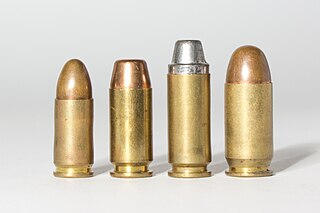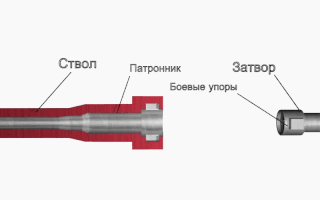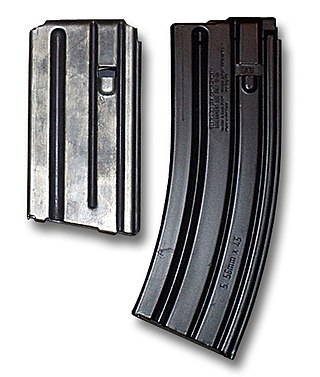A country code is a short alphanumeric identification code for countries and dependent areas. Its primary use is in data processing and communications. Several identification systems have been developed.
In NATO, a standardization agreement defines processes, procedures, terms, and conditions for common military or technical procedures or equipment between the member countries of the alliance. Each NATO state ratifies a STANAG and implements it within its own military. The purpose is to provide common operational and administrative procedures and logistics, so one member nation's military may use the stores and support of another member's military. STANAGs also form the basis for technical interoperability between a wide variety of communication and information systems (CIS) essential for NATO and Allied operations. The Allied Data Publication 34 (ADatP-34) NATO Interoperability Standards and Profiles which is covered by STANAG 5524, maintains a catalogue of relevant information and communication technology standards.

Ballistics is the field of mechanics concerned with the launching, flight behaviour and impact effects of projectiles, especially weapon munitions such as bullets, unguided bombs, rockets and the like; the science or art of designing and accelerating projectiles so as to achieve a desired performance.

The 9×19mm Parabellum is a rimless, centerfire, tapered firearms cartridge.
NATO Joint Military Symbology is the NATO standard for military map symbols. Originally published in 1986 as Allied Procedural Publication 6 (APP-6), NATO Military Symbols for Land Based Systems, the standard has evolved over the years and is currently in its fifth version (APP-6D). The symbols are designed to enhance NATO's joint interoperability by providing a standard set of common symbols. APP-6 constituted a single system of joint military symbology for land, air, space and sea-based formations and units, which can be displayed for either automated map display systems or for manual map marking. It covers all of the joint services and can be used by them.
A NATO standard grade scale is used by the NATO and its partners for the purpose of comparing military ranks across the member nations militaries, as well as for a number of administrative tasks.
This page lists the enlisted ranks and insignia of NATO member armies. For the comparison chart of the commissioned officers, see Ranks and insignia of NATO armies officers.

A slamfire is a discharge of a firearm occurring as a cartridge is being loaded into the chamber. Some firearms are designed to slamfire, but the term also describes a malfunction of self-loading firearms. Shooters accustomed to firearms requiring trigger activation for discharge may be unprepared for a slamfire discharge.

A STANAG magazine or NATO magazine is a type of detachable firearm magazine proposed by NATO in October 1980. Shortly after NATO's acceptance of the 5.56×45mm NATO rifle cartridge, Draft Standardization Agreement (STANAG) 4179 was proposed in order to allow NATO members to easily share rifle ammunition and magazines down to the individual soldier level. The U.S. M16 rifle's magazine proportions were proposed for standardization. Many NATO members, but not all, subsequently developed or purchased rifles with the ability to accept this type of magazine. However, the standard was never ratified and remains a "Draft STANAG".
NATO AEP-55 STANAG 4569 is a NATO Standardization Agreement covering the standards for the "Protection Levels for Occupants of Logistic and Light Armored Vehicles".

NATO EPVAT testing is one of the three recognized classes of procedures used in the world to control the safety and quality of firearms ammunition.

STANAG 4355 – The Modified Point Mass and Five Degrees of Freedom Trajectory Model, an element of military strategy, is a NATO Standardization Agreement for surface to surface exterior ballistic modelling in support of Artillery, mortar and rocket systems. This model is not as time-consuming to solve as the rigid body system, and uses a force system, axial spin and an estimate of the yaw of repose.

The NATO Army Armaments Group (NAAG) Integrated Capability Group Indirect Fires (ICGIF), formerly Land Group 4, and their Sub Group 2 (SG2) on Surface to Surface Ballistics has created a widely used set of shareable fire control software using the Ada programming language. This product is known as the SG2 Shareable (Fire Control) Software Suite (S4) and is sometimes abbreviated as S4 when referenced.

NATO cartridge may refer to:

STANAG 6022 – Adoption of a Standard Gridded Data Meteorological Message is a NATO Standardization Agreement for gridded meteorological data for operational use in Artillery fire control systems, NBC Automated Warning, Reporting and Prediction Systems, and various computer-based Battlefield Decision Aids (BDAs). The message format is referred to as METGM.

STANAG 4119 - Adoption of a Standard Cannon Artillery Firing Table Format is a NATO Standardization Agreement to describe standardized requirements for the development and publication of tabular firing tables for artillery and appropriate mortar cartridges in both complete and abridged formats.

STANAG 4140 - Adoption of a Standard Target Acquisition Meteorological Message (METTA) is a NATO Standardization Agreement to provide meteorological information such as refractive index, temperature, pressure and cloud cover for remotely piloted vehicles, drones, weapon locating radars and sound ranging systems.
A number of standards specific to military organizations exist for trailer connectors, the electrical connectors between vehicles and the trailers they tow that provide a means of control for the trailers. These can be found on surplus equipment sold for civilian use.
Commissioned officers' and enlisted rank comparison chart of all marine forces.








